Ground source heat pumps
Everything you need to know about ground source heat pumps
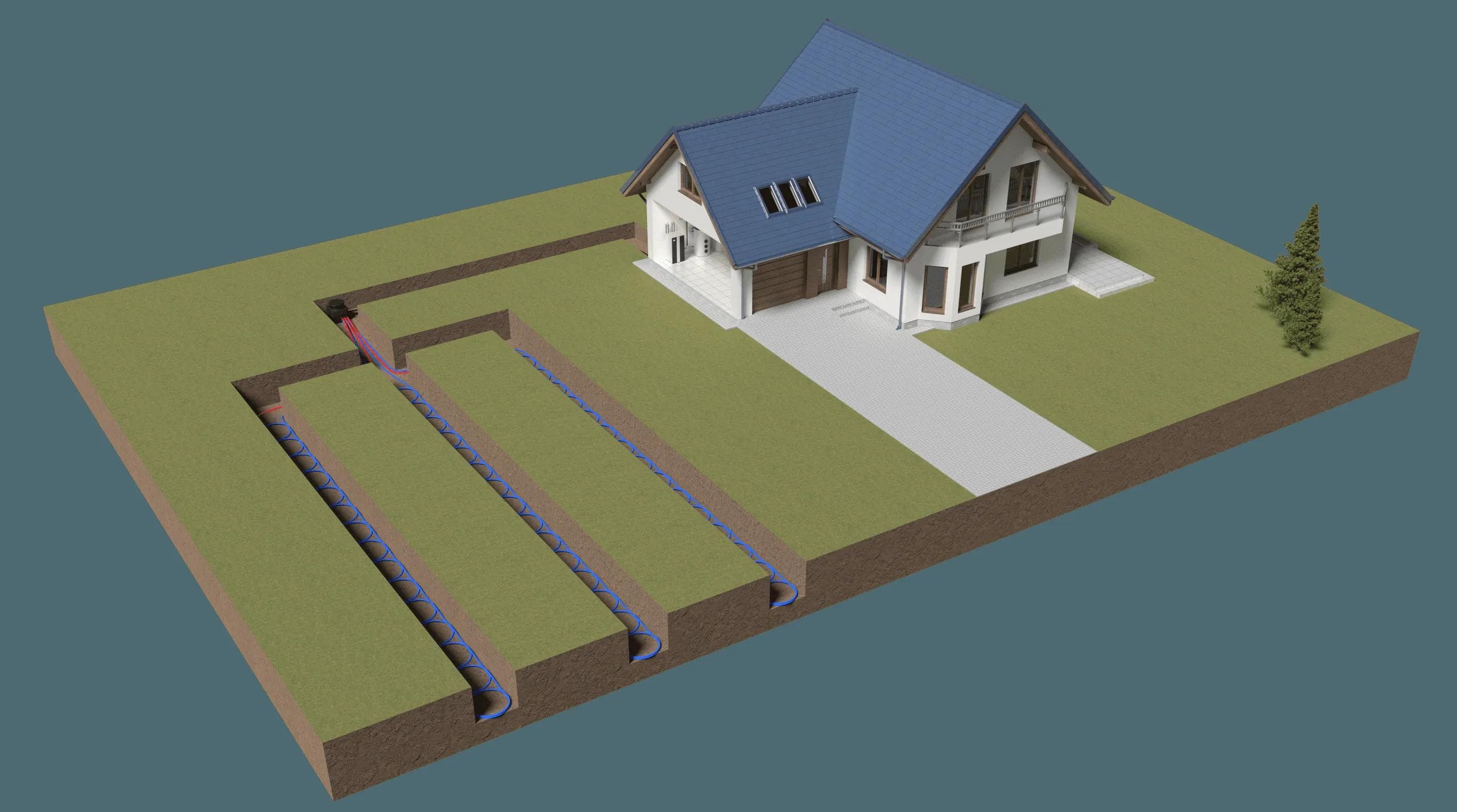
A ground source heat pump is a renewable heating system that extracts low-temperature solar energy stored in the ground or water.
It uses buried pipework and compresses this energy into a higher temperature.
A ground source heat pump provides a building with 100% of its heating and hot water all year round.
Everything you need to know about ground source heat pumps
Yes, ground source heat pumps are more efficient than air source heat pumps. The ground temperature in the UK typically remains between 8℃ – 12℃, whereas the air temperature in winter especially during the mornings and evenings when heating is required, is often much cooler. Extracting heat from the ground is more efficient than extracting heat from the air during these times.
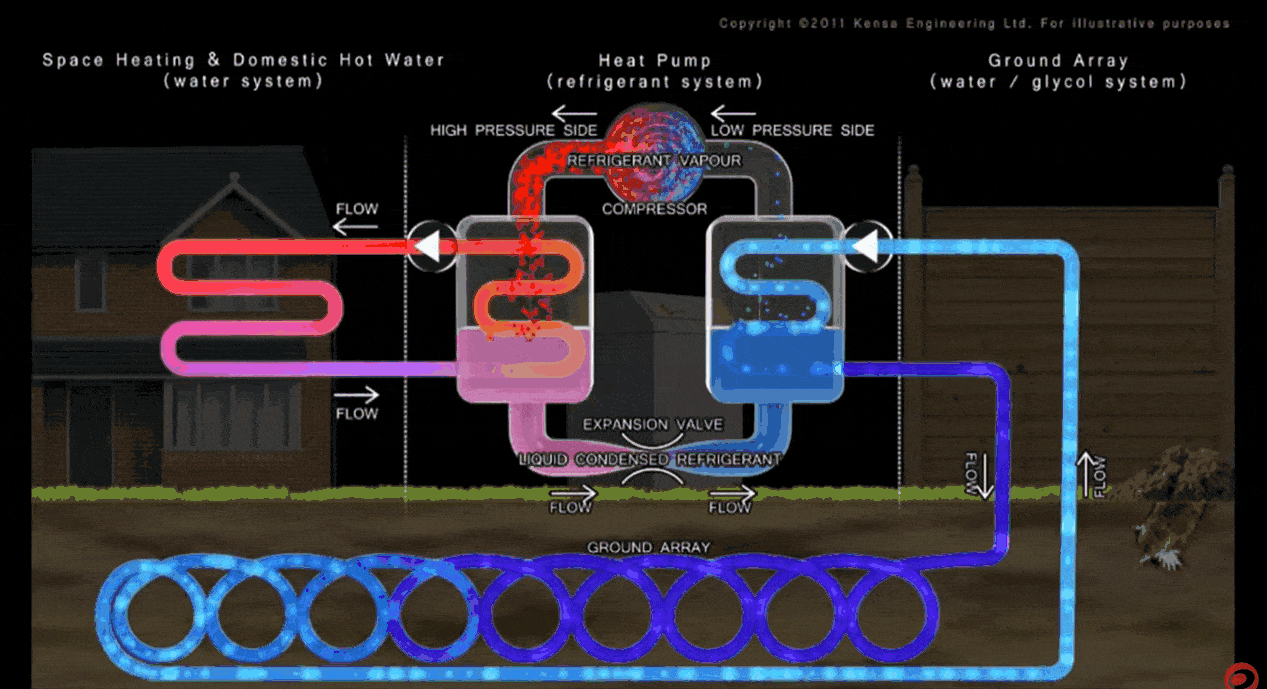
Heat naturally flows from warmer to cooler places. A ground source heat pump exploits these physics by circulating a cold fluid through ground array pipework in the ground or water. It absorbs low-grade surrounding energy from external heat sources, such as rock, soil, lakes and streams.
The ground source heat pump then compresses and condenses this free energy to a higher temperature, and transfers it to the property’s heating and hot water system.
Having surrendered the absorbed energy from the ground to the heat pump, the fluid continues its circuit back to the submerged pipework to commence the cycle all over again.
The cost of Ground source heat pumps typically range from £3,500 – £6,000. Installation costs are often higher than alternative heating systems, but when compared over a product lifetime, ground source heat pumps are more cost-effective and carbon-efficient than alternative heating systems.
Zero Rated VAT on Heat Pumps
You could be eligible for a 0% VAT rate for domestic purchases of heat pumps. 0% VAT is available to homeowners until 31st March 2027. Full details can be found here.
A cold water anti-freeze mix is pumped through the ground within a series of energy-absorbing pipes, known as ground arrays. As heat naturally flows from warmer to cooler places, the anti-freeze mix circulating the array is constantly warmed by the ground’s low-grade heat.
Having increased in temperature, the anti-freeze mixture is fed into a heat exchanger called the evaporator.
Within the secondary sealed side of the evaporator heat exchanger is a refrigerant that acts as a heat transfer fluid. When the water anti-freeze mixture enters the evaporator, the energy absorbed from the ground is transferred into the refrigerant which begins to boil and turn into a gas.
The refrigerant never physically mixes with the water anti-freeze mixture. They are separated like sandwich layers by the plates of the heat exchanger which permit the heat transfer.
This gas is then fed into a compressor. The pressure of the refrigerant gas is increased in the compressor, which makes the gas temperature rise.
The hot refrigerant gas then flows into a second heat exchanger, called the condenser, which features an identical set of heat transfer plates.
The condenser delivers water hot enough to serve the space heating system and the property’s hot water needs. Having transferred its heat, the refrigerant gas reverts to a liquid.
This liquid is then passed through an expansion valve at the end of the cycle to reduce its pressure and temperature, ready to commence the cycle all over again.
I think ground source heat pumps are the future of energy generation and everyone should embrace this technology.
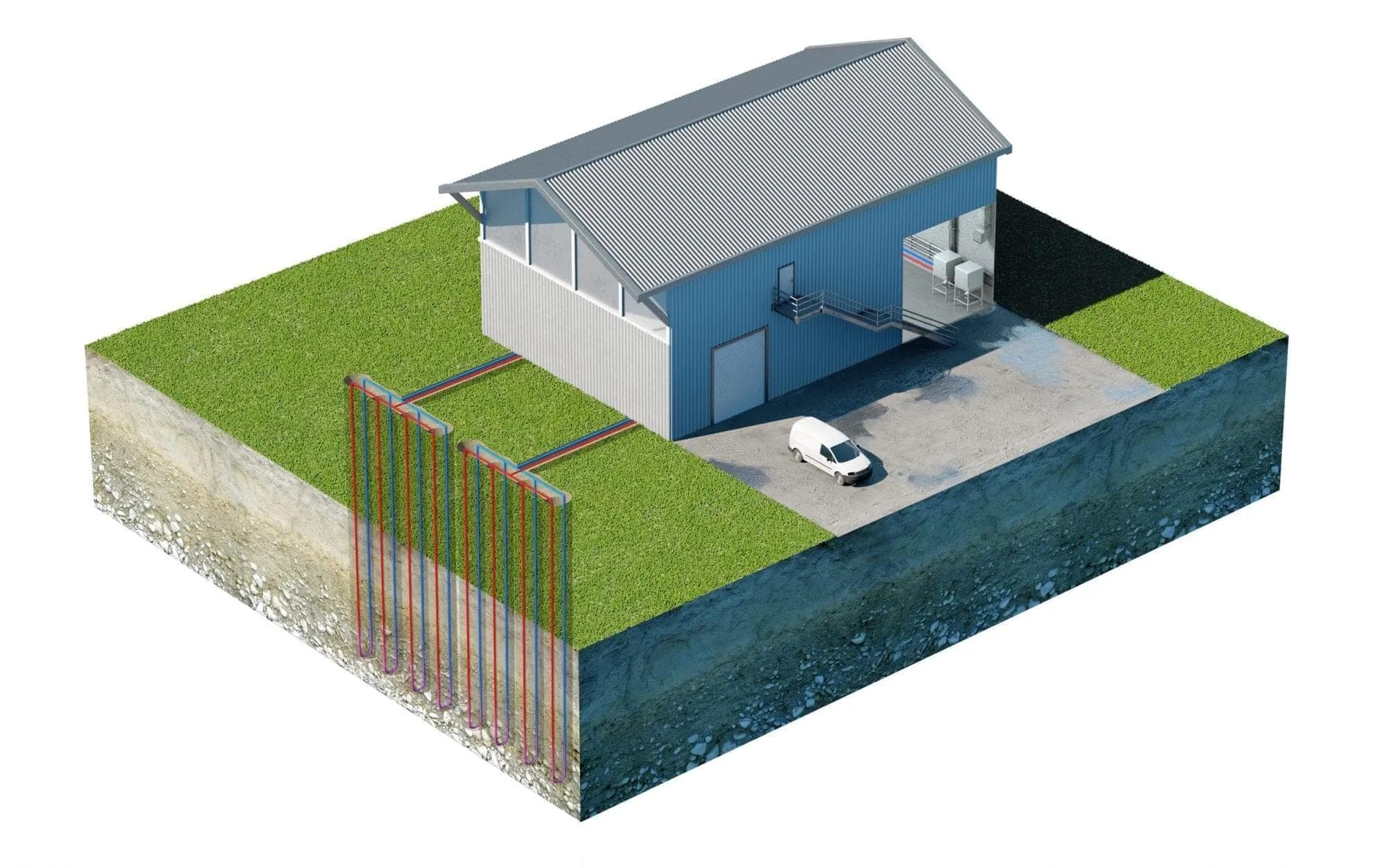
Yes, Kensa ground source heat pumps are capable of providing hot water up to 60°C.
The maximum output temperature of a heat pump depends upon many factors, including the flow rate through the domestic hot water cylinder coil and the ground temperature.

Ground source heat pumps – particularly smaller heat pumps – are not noisy. They often get confused with air source heat pumps, which due to their fans, tend to operate very loudly outside.
Noise will vary across different sized heat pumps. However, thanks to innovative insulation and advanced design in Kensa’s Shoebox and Evo heat pump series, noise isn’t a common issue.
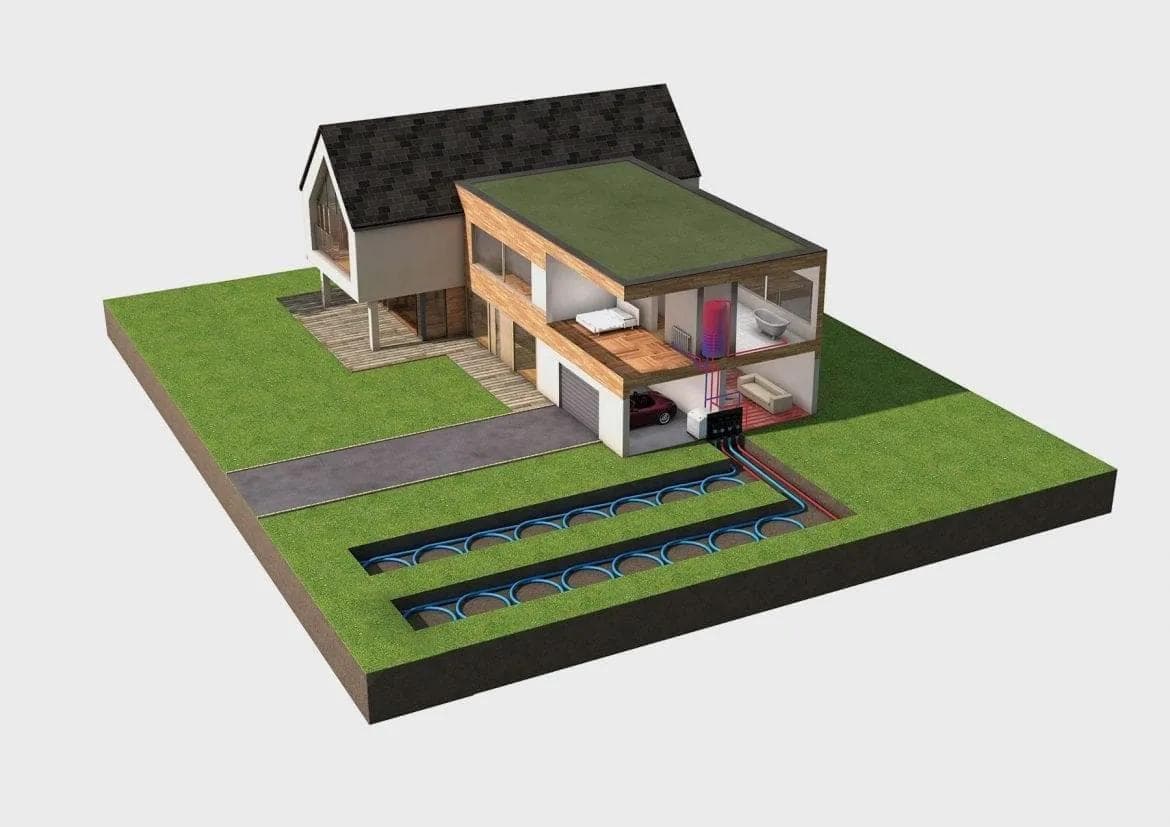
Most ground source heat pump installations are classed as permitted development – meaning they don’t need planning permission. However, there are some circumstances where planning permission is required. For instance, a property where more than one heat pump is installed, or projects where the ground array is installed any distance greater than 0.5 hectares.
Ground source heat pumps are designed to operate quietly. They can be installed inside, with no visual impact on the property. Air source heat pumps, on the other hand, are fitted on the outside of the property. They can be noisy and affect the property’s appearance, which is why they usually require planning permission.

Yes. Cold weather should not affect the performance of a ground source heat pump. Regardless of outside temperatures, the ground remains a stable temperature all year round; just 1.2m below ground it remains a fairly constant 8-12°C. This means your ground source heat pump will provide you with efficient heating and hot water whatever the weather.
Air source heat pumps lose efficiencies during the winter and overnight when the outside air temperature drops.




Yes, Kensa ground source heat pumps are capable of providing hot water up to 60°C.
The maximum output temperature of a heat pump depends upon many factors, including the flow rate through the domestic hot water cylinder coil and the ground temperature.
Ground source heat pumps – particularly smaller heat pumps – are not noisy. They often get confused with air source heat pumps, which due to their fans, tend to operate very loudly outside.
Noise will vary across different sized heat pumps. However, thanks to innovative insulation and advanced design in Kensa’s Shoebox and Evo heat pump series, noise isn’t a common issue.
Most ground source heat pump installations are classed as permitted development – meaning they don’t need planning permission. However, there are some circumstances where planning permission is required. For instance, a property where more than one heat pump is installed, or projects where the ground array is installed any distance greater than 0.5 hectares.
Ground source heat pumps are designed to operate quietly. They can be installed inside, with no visual impact on the property. Air source heat pumps, on the other hand, are fitted on the outside of the property. They can be noisy and affect the property’s appearance, which is why they usually require planning permission.
Yes. Cold weather should not affect the performance of a ground source heat pump. Regardless of outside temperatures, the ground remains a stable temperature all year round; just 1.2m below ground it remains a fairly constant 8-12°C. This means your ground source heat pump will provide you with efficient heating and hot water whatever the weather.
Air source heat pumps lose efficiencies during the winter and overnight when the outside air temperature drops.
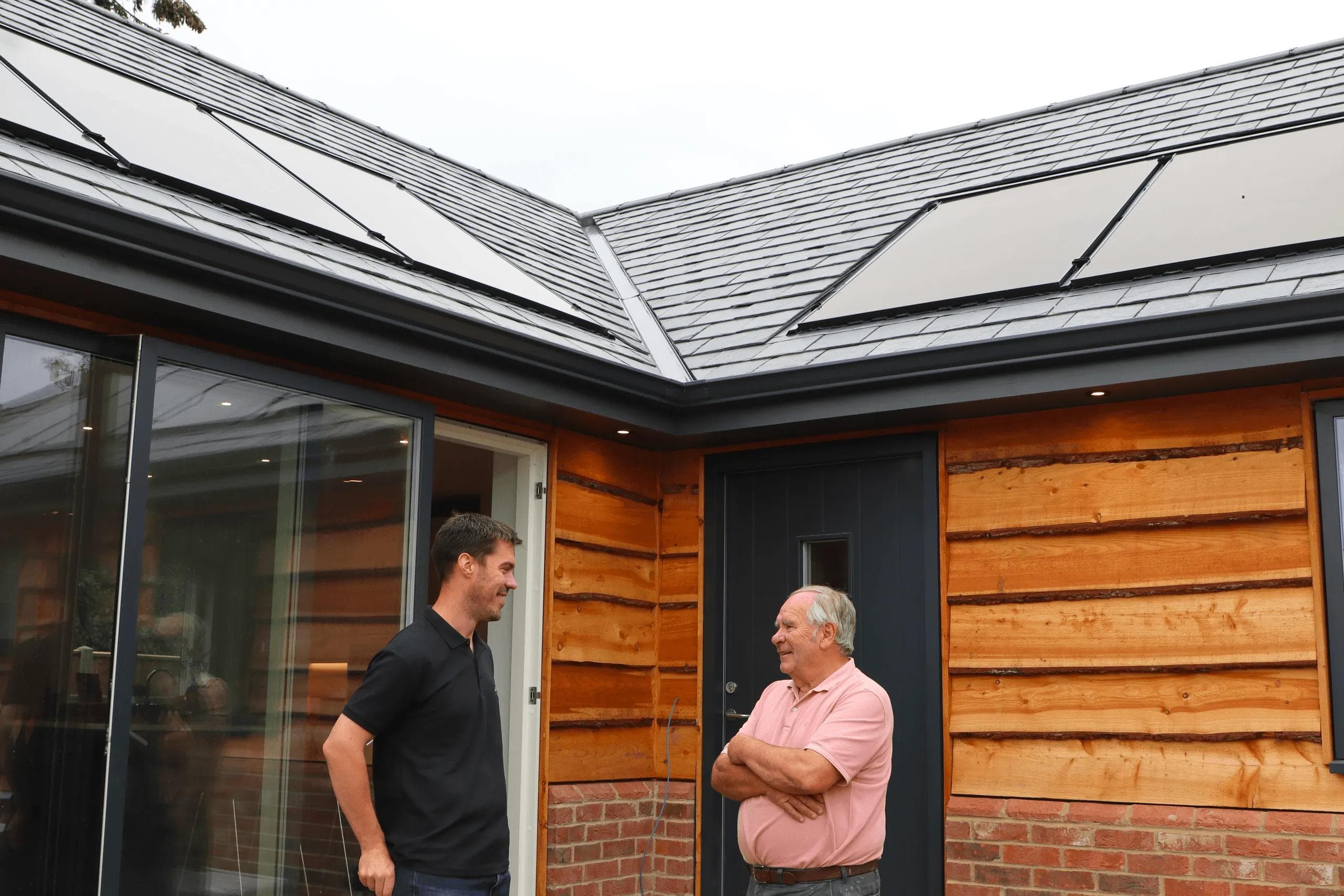


As a non-combustion heating system, there is no annual servicing requirement for a ground source heat pump. It requires very little maintenance, and the unit is installed safely inside the home, away from damaging external elements.
Top tips for minimal maintenance
Over a heat pump’s 20-year lifetime, it’s sensible to check on its performance as you would with any other heating system. To prepare for the heating season, simple system checks can be performed by any installer, which include:
Checking the heat collectors to make sure they’re absorbing the optimum amount of energy
Looking over the distribution system’s room stats and programmers to make sure they’re operating and functioning correctly\nMaking sure any battery-charged components have charge\nEnsuring the pressure of the system is above 2 bar
Testing the gas charge pressure on the heating system’s expansion vessel
By maintaining your heat pump, you’re making sure it’s performing at its best. That way, it remains energy efficient, continues to save you money on your heating bills, and ensures and optimises continued payments from the Renewable Heat Incentive (RHI: this scheme has now closed – please visit this page to explore other funding).
The game-changing Genesis System Manager
A world-first ground source heat pump controller, the Genesis System manager further minimises maintenance. As a current innovation in the Evo ground source heat pump, the Genesis can pre-empt and identify potential issues before they happen.